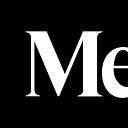How to add pronouns to your Medium profile
A simple how-to guide
Editor’s note: As we launch pronouns on Medium profiles, we wanted someone in our community to share their experience with the feature. We asked Sieran Lane if he’d be up for writing this story explaining how — and why — to set up your pronouns on Medium. Enjoy!
I’m a queer, non-binary trans person who goes by he/him pronouns.
But in the past, I went by ze, zim, zis, zizelf.
People often ignore the pronouns I write in my bio, and just call me whatever gender they believe I am.
Many say they/them, which is a decent and well-meaning attempt. But I actually feel more comfortable with he/him.
Hence, I was excited to see Medium add the pronoun feature! It will appear on our profile, beside our name when we comment, and when we hover the mouse over our name.
In this piece, I’m going to show you how to set up your pronouns on your Medium profile.
How to add pronouns
Note: This is for the desktop version of Medium. The app version may be a little different.
Step 1: Find the settings
Go to the top right-hand corner of the Medium home page. Click your profile picture. In the dropdown menu, press Settings.
Step 2: Go to your profile
In the Settings window, click Profile information. You’ll see “Edit your photo, name, pronouns, short bio, etc.” here as well.
Step 3: Pick your pronouns
In the new window that appears, you’ll see a rectangular field under Pronouns. Start typing in your pronouns. You can include a maximum of four. If you don’t see your pronouns, you can also click “Suggest others” to request them.
As an example, I’ll type in “he.” You can see a dropdown menu of all available pronouns that contain “he.” This includes he, her, she, them, and they.
When I enter “i”, this shows him, it, and zim.
For my own profile, I decided on he, him, ze, and zim.
Why it matters
While many people use a name that’s easily read as their correct pronouns, many others use a more gender neutral name.
My name, Sieran, is androgynous. So some people even ask me whether I’m male or female…The answer is neither. I’m nonbinary. But I like to use he/him pronouns.
Some folks use non-Anglo Saxon names that people outside of their culture don’t know how to decode, gender wise.
And some people use names that are traditionally read as a certain gender, but they actually have a different gender.
For instance, I have a friend named Erin. But he is non-binary, not female. And he goes by he/ him and they/them.
Checking someone’s photo to guess gender isn’t the best solution, either. Not everyone uses a photo of their face. And some of us, like myself, have a photo that people often interpret as the wrong gender.
It’s quite unpleasant when someone calls you by the wrong pronouns, even if it’s unintentional.
What are these ze, zim, etc. pronouns?
These are neo pronouns, i.e. pronouns that are not the standard he, she, or they.
For more information about pronouns, neo pronouns, and how to use them, check out Libby Winkler’s guide, Understanding Pronouns: A Guide for Allies.
The English language is constantly evolving. Some of us don’t feel that he, she, or they truly express how we feel inside. So we may use other ones.
Contrary to popular belief, not all non-binary people go by they/them pronouns, though most do. Personally, ze/zim was the closest to how I felt, though I use he, him, ze, and zim.
Some people cannot understand how I could use the masculine he/him pronouns yet be non-binary. I mostly switched to he/him, because few people understood how to use ze/zim. A lot of people just avoided using pronouns for me at all. And it was awkward to hear them say my name so many times in a sentence.
Some ally friends said I should stand up for my pronouns, because people ought to respect them. They mean well, but it’s hard for me too to see people struggle with my pronouns or simply avoid them. So I gave up and used he/him.
But pronouns are very personal. It’s not some 1 to 1 rule, where you must use certain pronouns if you have a certain gender identity.
Thus, this is an important new feature on Medium. I feel heartened that I can display my pronouns prominently on Medium now, so there is no more ambiguity for people.
Feedback from the community
Editor’s note: We shared this feature in early access with a few volunteers in our community to collect feedback — if you were one of them, thank you! We’ve got some of the highlights below.
Save space in your bio
“The great thing about this is I can now save space in my short bio by removing where I put my pronouns there, which is great because we only have 160 characters. Now I can put more in there if I wanted to.” — Pax Ahimsa Gethen, Black trans blogger and Medium curator
“I had considered adding my pronouns before, but because we have limited characters on our profile, that wasn’t possible.” — Gaby Rogut, editor of iPoetry and vocES en Español
Make pronouns more obvious
“For nonbinary folks like myself, our pronouns are not obvious, so now it’ll be easy for people to address me correctly.” — Pax Ahimsa Gethen
“Having personal pronouns available on our profile pages is uplifting and an important metadata element allowing clarity and authentic engagement.” — Grace Mary Power, editor of Thirty over Fifty
Easy to do
“I just hit save, and that’s it.” — Tucker Lieberman, editor of Prism & Pen
“It’s pretty simple, let’s go check if it’s done…oh yeah, it’s there!” — Anangsha Alammyan, editor of Books Are Our Superpower

